London is one of the busiest, most internationally recognised commercial cities in the world. From high-street retail arteries to global financial centres and nonstop tourism, the city concentrates buying power, cultural influence, and constant movement in a compact geography. For brands that need to be seen, remembered, and trusted, advertising in London delivers reach and credibility that few markets can match.
High audience density, multimodal transport, and world-famous visual icons like the London taxi cab and Underground network turn the city itself into a media platform. Inbound tourism to the UK hit strong recovery levels. London captures a disproportionate share of those visits, with estimates showing tens of millions of total visitors to the capital in 2024 and continued growth forecast into 2025.
At the same time, Transport for London (TfL) reports tens of millions of daily journey stages across modes, ensuring brands that appear across taxis, buses, and Tube environments earn repeated impressions from commuters, residents, and visitors.
Out of home (OOH) spending in the UK continues to climb, and digital OOH is taking an increasing share as advertisers seek high-impact formats that complement performance media. London is at the centre of this growth.
London at Scale: Audience, Movement, Spend
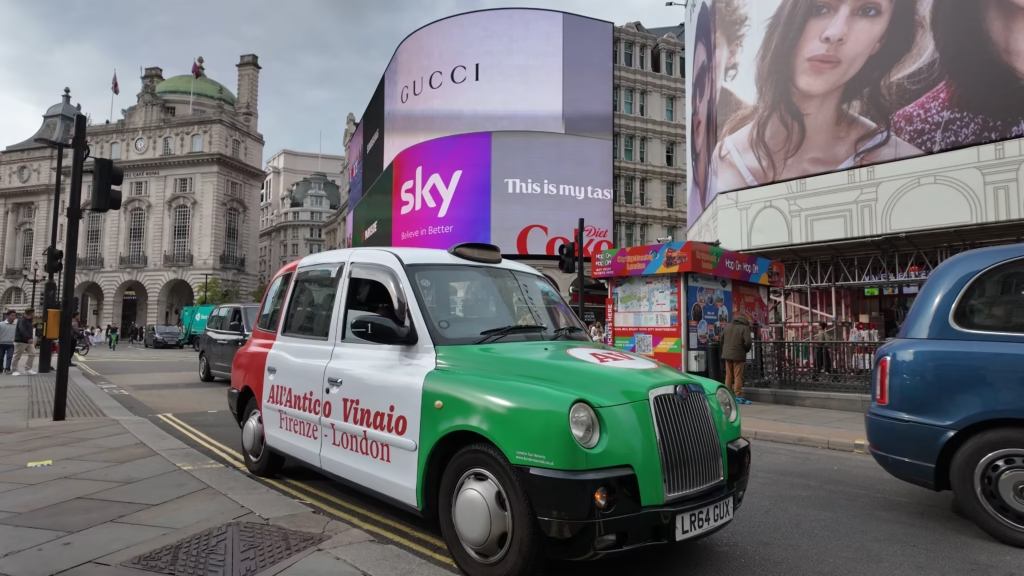
Before selecting any channel, understand the size and diversity of the market you are about to enter.
- London attracts huge visitor volumes year-round
Tourism data aggregations drawing on VisitBritain and other official sources estimate that roughly 30 million total (domestic + international) visitors came to London in 2024, with 10.4 million international arrivals recorded in the first half alone. Forecasts call for further inbound growth into 2025, underscoring the city’s continued pull for global travellers.
- Daily mobility creates repeat exposure opportunities
TfL consolidated travel reporting shows roughly 29.5 million daily journey stages across London transport modes in 2023, up from 2022, indicating a rebound in citywide movement and sustained commuter flows that advertisers can tap.
- Bus usage remains a major reach driver
Government transport statistics confirm 1.8 billion passenger journeys on local buses in London in the year ending March 2024, accounting for more than half of all local bus journeys in England and illustrating the scale available through transit media such as bus and taxi formats in the capital.
Why Advertising in London Delivers Outsized Brand Visibility?
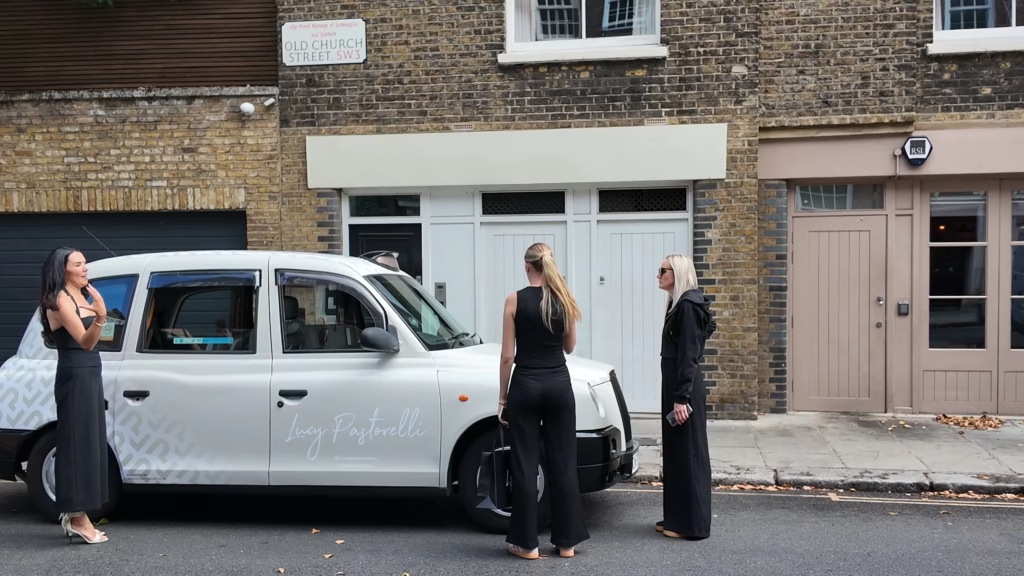
Once you appreciate the audience scale, the strategic case for allocating budget to the capital becomes clearer.
1. Density plus diversity amplify campaign impact
London concentrates tourists, local residents, commuters, high-net-worth visitors, and decision makers in overlapping corridors. Advertising that travels through or sits within these corridors repeatedly reaches different high-value segments without requiring separate media buys. London’s share of total UK inbound visits and spend underscores this concentration advantage for advertisers.
2. Movement across modes sustains frequency
Travel in London data shows strong activity across the Underground, bus, and other modes. When you layer formats such as Tube panels, bus wraps, and London taxi advertising, you effectively follow your audience throughout a full day, compounding recall at relatively efficient reach costs compared with many pure digital channels.
3. OOH is growing as a trusted, brand-safe medium
Industry expenditure tracking from the Advertising Association shows UK out-of-home revenue rising in 2024, with digital OOH driving double-digit growth in spend. Advertisers are increasingly using OOH to reinforce awareness and trust in media plans that balance digital volatility.
High-Impact Central London Areas Your Campaign Can Reach
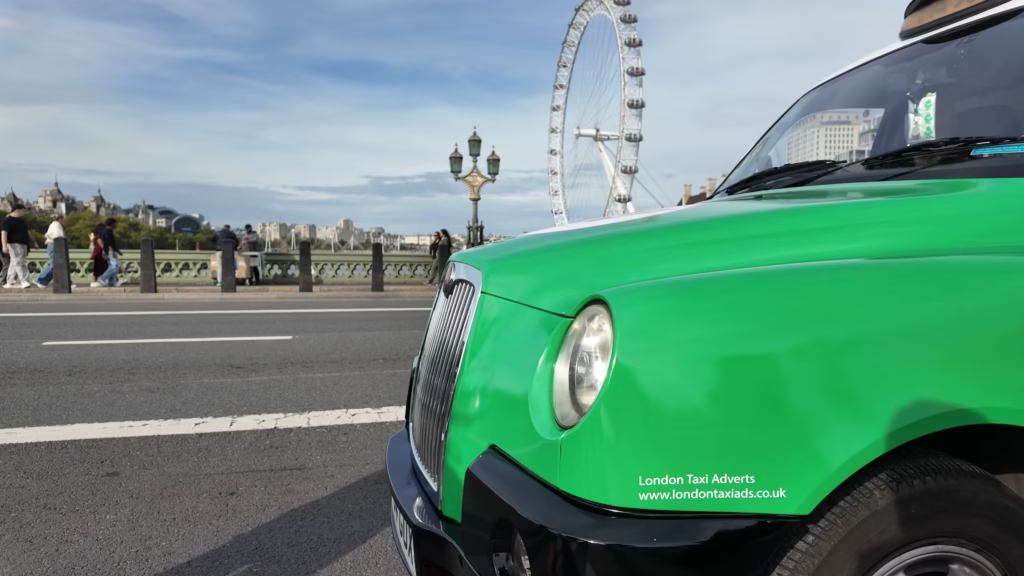
Geography matters. Central London’s commercial and cultural clusters generate heavy visual exposure and long dwell times, making them ideal zones for mobile formats like taxi advertising in London or large premium sites.
- Oxford Street and the West End retail spine
Oxford Street draws vast daily shopper volumes and sits near Regent Street, Soho, and Bond Street, creating a dense band of retail audiences and international visitors. Regular taxi and bus traffic through these corridors amplifies campaign frequency during peak shopping windows.
- Piccadilly Circus and Leicester Square are entertainment hubs
The iconic digital screens and constant pedestrian flow make this area a magnet for brand storytelling and experiential extensions layered with transit media passing through. Clear Channel highlights central entertainment districts as prime OOH environments for reach and relevance.
- Covent Garden and cultural draw zones
Blending tourism, dining, retail, and performance venues, Covent Garden benefits from steady multi-purpose footfall. London bus routes serving central zones and premium depot selections targeting city center streets can position your creative where visitors linger.
- City of London and Canary Wharf business corridors
Financial decision makers, corporate events, and weekday commuter peaks drive high-quality impressions. Integrated OOH is frequently used in multichannel B2B and fintech launches, according to London OOH trend reporting.
- Shoreditch, Tech City, and creative clusters
Startups, digital natives, and nightlife converge in East London. Outdoor advertising companies with borough-level coverage, including Clear Channel, enable targeted delivery in emerging tech and culture districts.
Types of Advertising in London: Your Channel Landscape
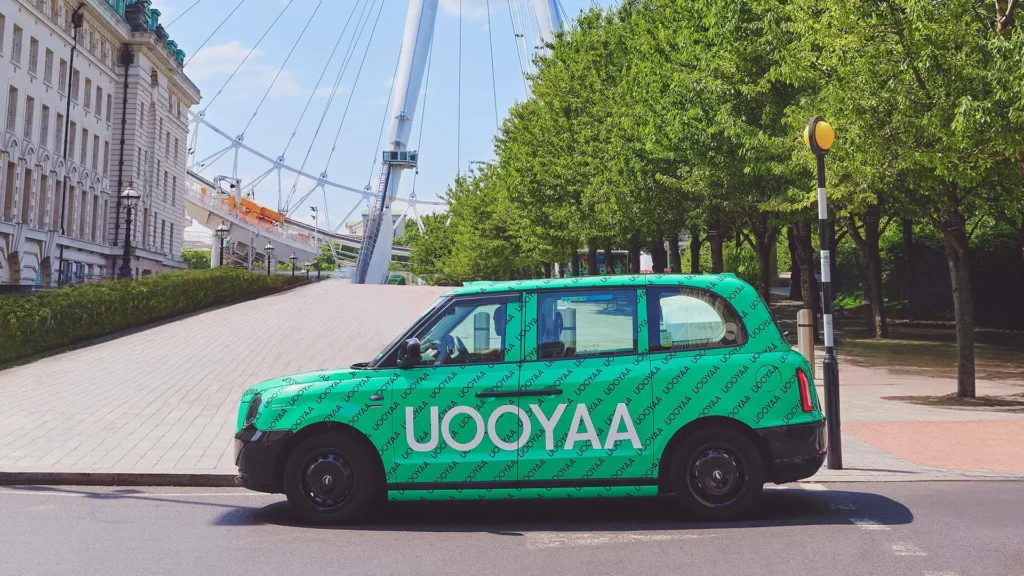
With the market context set, here is an overview of the main types of advertising in London and when to use each.
1. London taxi advertising
Taxi formats travel where people move. Specialists note that taxi ads go where the people go and that the familiar London taxi cab carries trust and high noticeability among locals and tourists alike.
2. London Underground advertising
Tube environments deliver mass reach and dwell time. Cost varies by station footfall, format, and campaign length, but industry guides position the Underground as one of London’s most effective brand visibility platforms.
3. London bus advertising
From rears and streetliners to full wraps, bus media offers scale across the entire capital. Guides show price ladders from low cost interior panels to premium large-format wraps serving central routes.
4. Billboard advertising in London (roadside and digital)
Major outdoor media owners provide static and digital billboards across boroughs, shopping areas, and arterial roads, giving brands flexible reach and creative scale. Coverage maps across Greater London show inventory in high-traffic northern, eastern, western, and southern corridors.
5. Street furniture and local OOH
Bus shelters, pedestrian panels, and community sites extend frequency in local catchments and can be booked to support local business advertising or postcode-specific promotions. Providers with borough networks make zoning straightforward. ([clearchannel.co.uk][9])
6. Programmatic and digital out-of-home screens
Digital OOH now accounts for a majority share of UK OOH spend growth, enabling dayparting, contextual triggers, and rapid creative swaps that pair well with mobile retargeting.
Spotlight: Why London Taxi Advertising Works
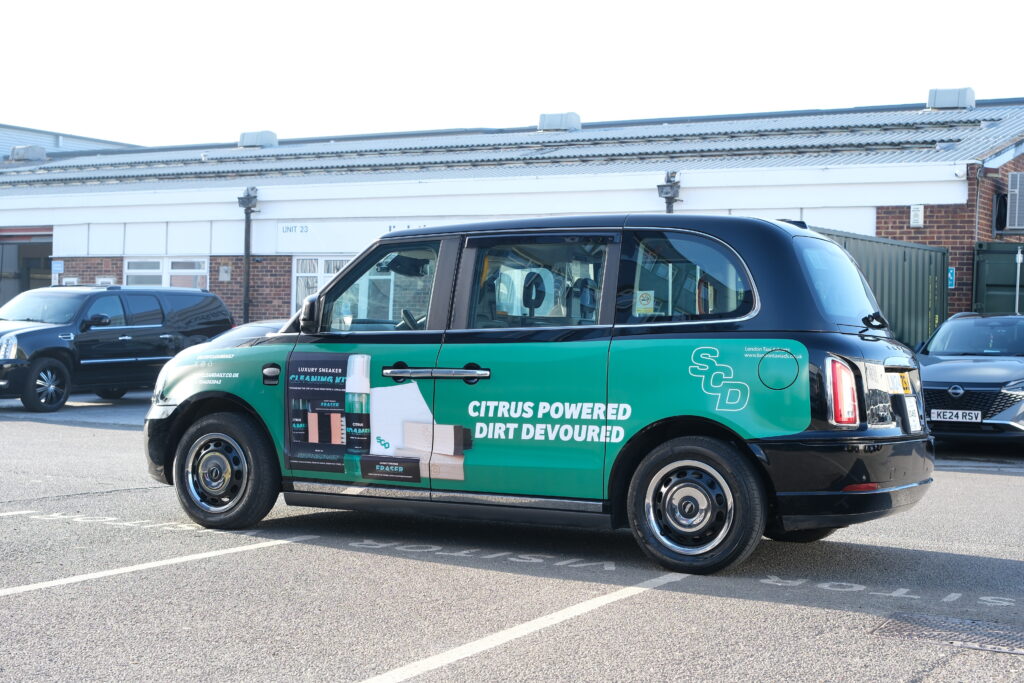
If you need a high recall, citywide footprint that scales from a single vehicle to a fleet, London taxi advertising deserves a top spot in your media mix.
- Mobility plus cultural equity
Taxi ads ride through business districts, tourist landmarks, residential streets, and event venues within a single day, multiplying audience touchpoints. Industry specialists emphasise that taxis are a much-loved part of the London streetscape and are consistently noticed across demographics.
- Fleet flexibility and campaign tailoring
You can book diesel or electric taxis, choose fleet counts, and scale by borough or full London coverage. One Day Agency’s cost guide explains that unit pricing declines as volumes rise and that fleet mix affects campaign economics.
- A supported, regulated transport environment
TfL’s most recent Taxi and Private Hire action planning underscores the continued role of licensed taxis in the transport network and outlines steps to sustain the trade, giving advertisers confidence that the medium remains integral to city mobility.
- Fleet scale and market reality
Recent reporting citing the Mayor of London noted a licensed taxi fleet in the mid-14,000 range with expectations of a modest increase, reflecting a sizable rolling canvas for advertisers even amid industry transition to zero emission vehicles.
Benchmarks: Taxi, Tube, Bus, and Beyond

Budgets vary by format, scale, and season. The following current market guide ranges help with directional planning. Always request a bespoke quote.
1. London bus advertising pricing
Format choice drives cost. Planning data shows interior panels at low per-placement rates, rears and streetliners in the tens, and large supersides or T-sides climbing into the hundreds per placement. Full London bus wraps for multi-week runs sit in five-figure territory, with some guides listing wrap campaigns starting around the mid tens of thousands.
2. Premium roadside and digital billboard buys
While pricing is highly location dependent, national media owners with London footprints advise budgeting premiums for high dwell central corridors and large digital sites that allow dynamic copy or programmatic triggers. These are often deployed in multichannel campaigns for brand launches or seasonal retail pushes.
Working With an Advertising Agency in London
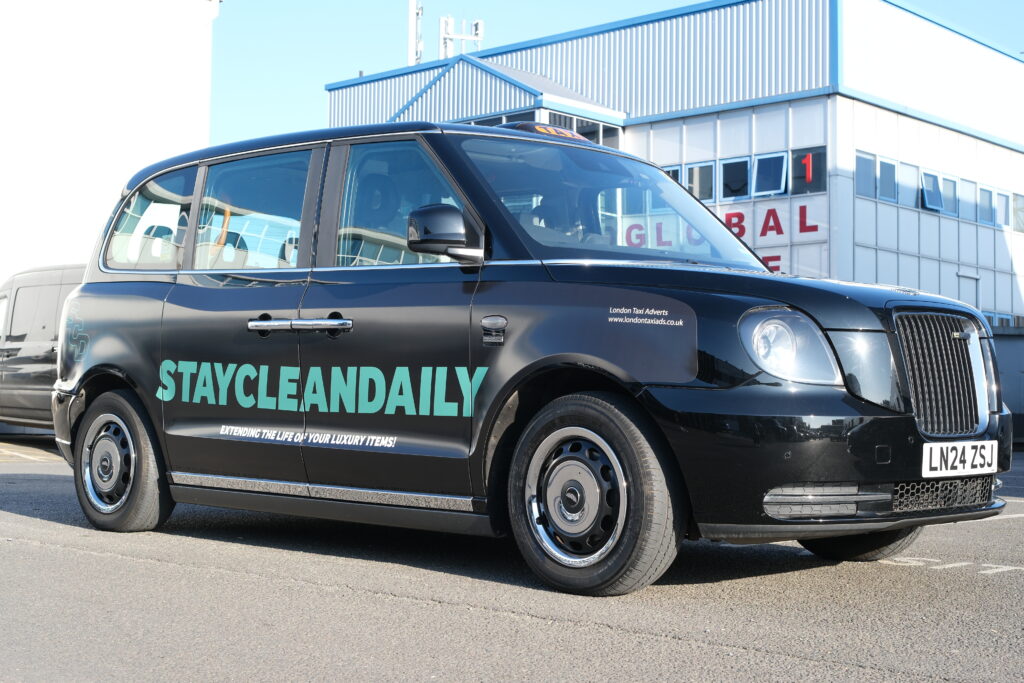
Managing a London campaign across multiple outdoor formats is easier with an experienced partner.
Why use a specialist?
London’s permitting rules, format specs, production timelines, and borough variations can challenge in-house teams. Dedicated taxi and outdoor agencies provide creative templates, wrap production, fleet allocation, and campaign analytics to streamline activation.
Selecting outdoor advertising companies
Evaluate fleet access, zone coverage, design support, reporting capabilities, and transparency of rates. Providers with multi-borough site networks enable brands to mix local business advertising with citywide reach in a single buy.
Integrating with wider media
Agencies increasingly build multichannel campaigns, aligning OOH bursts with digital and social activity to improve attention metrics and drive search and store traffic. Recent trend reporting shows multichannel campaigns are growing in popularity as brands pursue consistent experiences across touchpoints.
Planning Your London Campaign: From Brief to Street
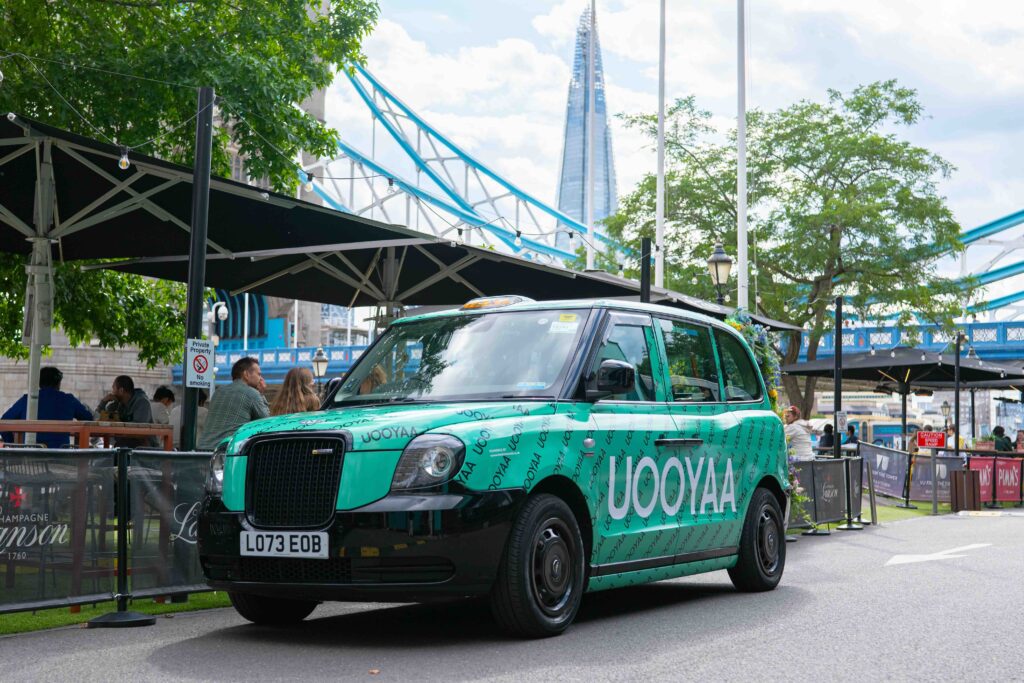
Turning strategy into execution requires clarity around goals, audience, and measurement.
- Define the objective before choosing the format
Are you launching, driving footfall, recruiting, or building sustained awareness? Match objectives to media: taxi for broad mobile reach, Underground for dwell and coverage, bus for frequency, billboards for visual spectacle. Industry guides for Tube and bus media both stress aligning format to campaign goals before buying.
- Map audience by zone and mode
Leverage borough coverage maps and central route upgrades to place inventory where your target actually travels. Central London premium bus route packages and borough site networks cited in planning resources can help narrow the field.
- Build a creative for motion and distance
Taxi and bus wraps require high contrast palettes, large type, and minimal copy to remain legible in traffic. Outdoor specialists repeatedly emphasise clarity and impact for moving formats.
- Layer measurement into every buy
OOH planners recommend combining exposure modelling with downstream signals such as web visits, QR scans, offer redemptions, and brand lift surveys. As digital OOH grows, campaign analytics and attribution tools are increasingly embedded in planning stacks.
Measuring ROI: Why London OOH Performs
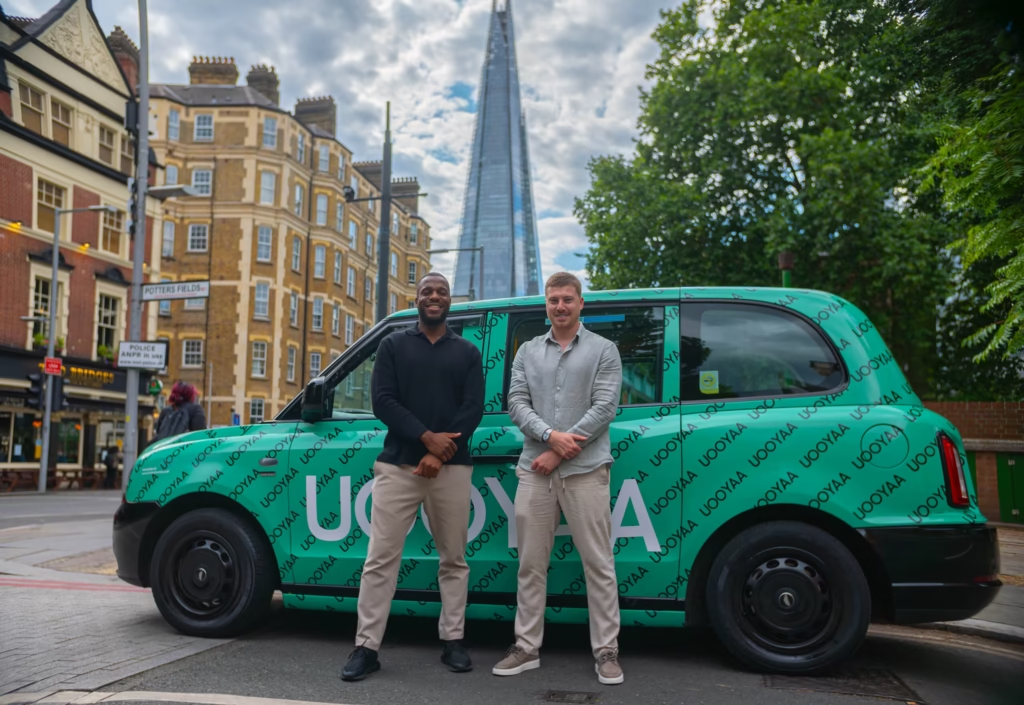
Advertisers demand accountability. Fortunately, current research supports the effectiveness of OOH when part of an integrated plan.
1. OOH drives awareness and intent
Nielsen analysis of OOH campaigns shows measurable gains in unaided awareness and purchase intent when brands invest consistently, highlighting the channel’s contribution to full-funnel performance.
2. Digital OOH prompts action
UK industry roundups report that a majority of consumers have taken action after seeing digital OOH, including visiting a site or store, underscoring the value of adding triggers like QR codes or short URLs to creative.
3. Investment is the following results
With UK out-of-home revenue rising and digital formats growing faster than the overall medium, market spend patterns suggest advertisers are seeing sufficient return to continue increasing budgets.
Future Outlook: Smarter, Greener, More Connected London OOH
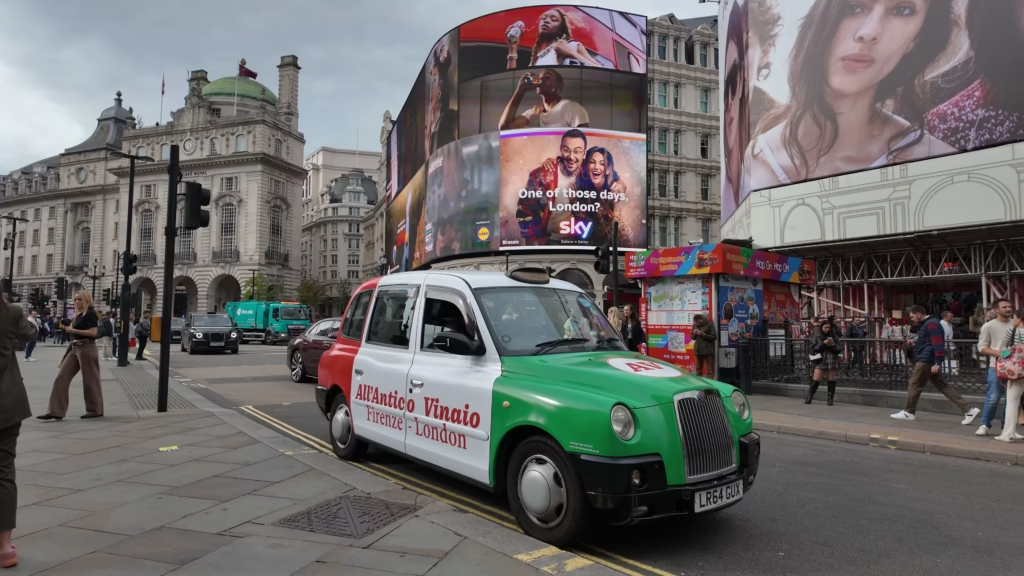
London’s outdoor media landscape is evolving quickly, offering new creative and data opportunities.
- Growth of programmatic and flexible buying
Trend reporting shows rapid adoption of programmatic OOH tools that let advertisers trigger screens by data inputs such as time of day, weather, or live retail signals, creating agile campaigns that extend digital strategies into the physical world.
- Shift toward digital and dynamic inventory
Digital OOH accounted for an increasing share of total UK OOH spend into 2024, and planners expect that share to keep rising as brands seek agility and creative animation across premium screens in London.
- Sustainability and network modernisation
Outdoor operators highlight investment in greener product development, electrification of fleets, and material recycling as advertisers request lower-impact campaigns. Borough network owners in London note sustainability commitments across poster and street furniture estates.
Make London Work Hard for Your Brand
Advertising in London is one of the smartest moves you can make for brand visibility because the city delivers concentrated audiences, constant movement, cultural credibility, and a rich mix of outdoor formats that scale to almost any budget. Taxi advertising in London offers mobile reach and immediate local legitimacy.
Underground and bus networks add mass exposure and dwell time. Premium roadside digital screens provide spectacle and dynamic messaging. Layered together, these channels can anchor a powerful visibility strategy that supports awareness, consideration, and conversion.
As you plan, start with the objective, pick the formats that match your audience’s daily journey, and work with a London taxi advertising company or full-service advertising agency in London that can coordinate production, zoning, and measurement. London’s streets are already telling stories. Make sure one of them is yours.
FAQs
1. How do I advertise in London?
Start by defining your audience and budget. Then choose formats that map to where that audience travels. Outdoor specialists and media owners provide planning tools and zone coverage to help allocate spend.
2. How much does it cost to advertise on a London taxi?
Costs vary by wrap type, fleet size, and campaign length. Planning guides show that booking more taxis reduces unit cost and that full wraps price above partial executions. Use these ranges to scope test budgets before requesting a tailored quote.
3. Is London a good place for marketing and brand launches?
Yes. London captures a large share of UK inbound visitors, generates heavy daily transport movement, and sits at the centre of growing UK OOH spend, giving brands scale and credibility from a single market footprint.
4. What are the main types of advertising in London I should consider?
Key options include taxi ads, London Underground advertising, bus formats, billboard advertising across London’s roadside, and digital screens. Each plays a role in reach, dwell, and frequency.
5. Which formats are best for quick brand visibility in Central London?
Mobile transit formats like taxi and bus supersides create broad and rapid exposure. Agencies recommend multichannel mixes for the fastest lift in awareness.